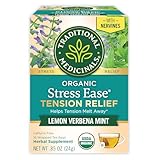Aeronabs are nanobodies that block the SARS-CoV-2 virus from attaching to the respiratory lining.
The nanobodies in AeroNabs are similar to antibodies, but they are much smaller but still have antibodies’ structural and functional properties.
They are naturally found in nature in llamas, camels, and sharks. In this study, the nanobodies are made in the laboratory.

A recent preprint study in bioRxiv, An ultra-potent synthetic nanobody that neutralizes SARS-CoV-2 by locking Spike into an inactive conformation, studied nanobodies’ potential use against COVID-19.
The results are very encouraging such that they called their combination of 3 nanobodies called mNb6-tri as Aeronabs.
How do AeroNabs Work?
The SARS-CoV-2 virus has to attach to the lining of the respiratory tract. For that to happen, the virus uses its “corona” or its spikes to stick to the cell.
The spikes are made of receptor-binding domains (RBD) that stay close until the virus is ready to attach to the cells.
The Aeronabs bind to the RBD before they can even open up. In this study, the Aeronabs are made up of 3 nanobodies. When a nanobody attaches, the other two also connect to the remaining parts of the RBD, making it 200,000 times more effective.
How Stable are Aeronabs?
Laboratory results may not apply to real-life situations. The study included exposing the nanobodies to high temperatures, changing to a powder form, and aerosolizing them.
What are the Advantages of Aeronabs?
Yesterday, the U.S. FDA approved the use of convalescent antibodies as a treatment for COVID-19. However, there are limitations to the supply of people who have recovered from COVID-19. Not all may be willing to donate, and some who were asymptomatic may not even know that they had the infection.
The use of convalescent plasma is described here, Beat a Pandemic Like in the Movies.
Furthermore, the protective antibodies against COVID-19 are present for less than 6 months in recovered patients. That was discussed in this article, Protective Antibodies Against Coronaviruses are Short-Lived.
Convalescent plasma has to be given intravenously, and only a fraction of the plasma goes to the respiratory lining.
And lastly, the convalescent plasma will only be given to patients with severe COVID-19, not to the mild or moderate cases.
In contrast, Aeronabs can be mass-produced. They are relatively inexpensive, stable, and go straight to the nose, throat, and lungs, where they are needed to stop the viruses in their tracts.
At present, the investigators are partnering with companies to make it available to the public.
Knowledge about Covid-19 is rapidly evolving. Information may update as new researches are done. Stay current by subscribing. Feel free to share.
Don’t Get Sick!
Related readings:
-
The MATH+ Protocol Results in Greater Survival in Hospitalized COVID-19 Patients
-
Michigan Study Shows Lower Mortality Rates with Hydroxychloroquine and Azithromycin
-
Hydroxychloroquine Lessens Mortality in Severe COVID-19 but Monitor the QT
-
What Works Again
-
Vitamin C and COVID-19
-
Any Science behind Elderberry for Influenza and COVID-19?
-
Zinc Deficiency Impairs the Immune System
-
-
The Rise and Fall of Antibodies in Mild and Asymptomatic COVID-19
-
The total number of COVID-19 is much higher
Reference:
Knowledge about Covid-19 is rapidly evolving. Information may update as new studies are made. Stay current by subscribing. Feel free to share.
Don’t Get Sick!
As an Amazon Associate, I earn from qualifying purchases.
Traditional Medicinals Tea, Organic Stress Ease, Relieves Tension, Promotes Relaxation, 16 Tea Bags
The Republic of Tea, Get Relaxed No.14 Tea for Relieving Stress Tea, 36-Count
TAZO Calm Chamomile Herbal Tea Bags, Caffeine Free Blend, 16 Total Tea Bags
$3.89 (as of June 2, 2025 16:32 GMT -04:00 - More infoProduct prices and availability are accurate as of the date/time indicated and are subject to change. Any price and availability information displayed on [relevant Amazon Site(s), as applicable] at the time of purchase will apply to the purchase of this product.)Discover more from Don't Get Sick!
Subscribe to get the latest posts sent to your email.





























